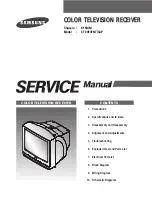
GS10/GS15, Technical Data
60
6
Technical Data
6.1
GS10/GS15 Technical Data
6.1.1
Tracking Characteristics
Satellite reception
Multi-frequency
Instrument
channels
Depending on the satellite systems and signals configured, a maximum number
of 555 channels is allocated.
Supported signals
Carrier phase and code measurements on L1, L2 and L5 (GPS) are fully independent
with AS on or off.
Support of QZSS L1, L2S, L5Q, L6L and IRNSS L5A is incorporated and will be provided
through future firmware upgrade.
6.1.2
Accuracy
Accuracy is dependent upon various factors including the number of satellites tracked,
constellation geometry, observation time, ephemeris accuracy, ionospheric distur-
bance, multipath and resolved ambiguities.
The following accuracies, given as
r
oot
m
ean
s
quare, are based on measurements
processed using Infinity and on real-time measurements.
The use of multiple GNSS systems can increase accuracy by up to 30% relative to GPS
only.
Differential code
The baseline precision of a differential code solution for static and kinematic surveys
is 25 cm.
Differential phase
in post-processing
Differential phase
in real-time
System
Signal
GPS
L1 C/A, L2P, L2C, L5
GLONASS
L1 C/A, L2P, L2C
Galileo
E1, E5a, E5b, AltBOC
BeiDou
B1, B2
Type
Horizontal
Vertical
Static and rapid static
3 mm + 0.5 ppm
5 mm + 0.5 ppm
Kinematic
8 mm + 1 ppm
15 mm + 1 ppm
Static with long observations
3 mm + 0.1 ppm
3.5 mm + 0.4 ppm
Type
Horizontal
Vertical
Single Baseline (<30 km)
8 mm + 1 ppm
15 mm + 1 ppm
Network RTK
8 mm + 0.5 ppm
15 mm + 0.5 ppm
















































